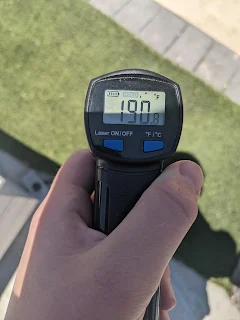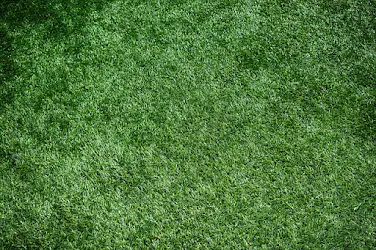Debunking the Myth: Why Artificial Turf Isn't the Green Solution You Think It Is
Artificial or synthetic turf often appears to be an eco-friendly substitute for a natural lawn. It's celebrated for its water-saving benefits, reduced maintenance, and a neat appearance. Here's a closer look at why people opt for artificial lawns and why it's not as sustainable as you might think. Astroturf aint cool.
Water-Saving Benefits: How Artificial Turf Conserves Water
One of the most touted benefits of artificial turf is its capacity for water conservation. Unlike natural grass, it doesn't need regular watering, making it an appealing option for areas prone to drought or where water resources are scarce.
A Chemical-Free Option: Artificial Turf's Environmental Perks
Artificial grass eliminates the need for fertilizers and pesticides, which can lead to water pollution and pose risks to human health. This is often cited as a significant advantage over natural lawns when considering the environmental impact.
Low Maintenance: How Artificial Turf Saves Time and Energy
When it comes to upkeep, artificial turf wins hands down. It negates the need for time-consuming lawn care practices, thereby cutting down on the usage of gas-powered mowers and tools. The reduced maintenance can contribute to fewer greenhouse gas emissions.
Built to Last: The Durability of Artificial Turf
Designed to endure heavy foot traffic and extreme weather conditions, synthetic turf stands up well over time. This durability minimizes the frequency of replanting, which can lead to soil erosion and other ecological concerns.
Picture-Perfect: The Aesthetic Appeal of Artificial Turf
Artificial lawns offer a consistently green and well-manicured look year-round. You can customize its appearance to mimic natural grass or even create a unique design that matches your personal taste.
Is artificial turf bad for the environment?
The rising popularity of artificial turf comes with the assumption that it's an eco-friendly alternative to natural grass. However, that isn't really the case.
Non-Biodegradable Materials: The Longevity Problem
Artificial turf is predominantly made from plastics and rubber, which are non-biodegradable materials. This poses a significant issue when it comes time to replace the turf, as these materials can take centuries to break down, contributing to landfill waste.
Challenges in Disposal: The Recycling Dilemma
Moreover, disposing of synthetic turf is fraught with complications. Often laced with chemicals and heavy metals, used artificial turf becomes a recycling challenge, requiring specialized treatment before disposal.
Energy-Intensive Production: The Carbon Footprint
The manufacturing of synthetic turf involves considerable energy and resource consumption, including water, fossil fuels, and chemicals. The melting process for plastics and rubber emits greenhouse gases, adding to the overall environmental impact.
Ecological Impact: Drainage and Biodiversity Concerns
 |
| Synthetic Grass reflecting 191 degrees F. Credit: Reddit user yoyomaster230 |
The Heat Island Effect: Why Artificial Turf Gets Hot
One often overlooked concern is the urban heat island effect. Materials in synthetic turf, particularly the rubber infill, can absorb and retain heat, causing surface temperatures to soar, which impacts human health and contributes to local warming.
Bacterial Breeding Ground: The Hidden Health Risks
Artificial turf is susceptible to bacteria growth, including MRSA, posing health risks. The material doesn't allow for proper drainage or air circulation, creating conditions conducive for bacterial proliferation.
Risk of Injuries: Safety Concerns with Artificial Fields
There's an increased risk of injuries like abrasions when using artificial turf. These wounds can serve as entry points for bacteria, leading to infections if the surface is not adequately cleaned.
Chemical Exposure: Risks for Young Children
Lastly, it's crucial to consider that synthetic turf materials can contain harmful chemicals like lead and phthalates. These substances have been associated with developmental delays and other severe health concerns, especially in children.
Alternatives to Artificial / Synthetic Turf
Native Landscaping: One of the most sustainable alternatives to a traditional lawn is to create a native landscape using plants and trees that are adapted to the local climate and soil conditions. Native plants require less water, fertilizers, and pesticides than non-native species, and they provide important habitat for local wildlife.
Xeriscaping: Xeriscaping is a landscaping approach that emphasizes the use of drought-tolerant plants and efficient irrigation systems to create low-maintenance, water-efficient outdoor spaces. This approach can be especially effective in areas with limited water resources or frequent drought conditions.
Permaculture Design: Permaculture is a holistic approach to land management that emphasizes the creation of self-sustaining ecosystems using a combination of organic gardening, natural building, and other sustainable practices. Permaculture designs can be tailored to a wide range of landscapes and climates, and they can provide a source of food, medicine, and other resources.
Rain Gardens: Rain gardens are designed to capture and filter rainwater, reducing runoff and erosion while providing habitat for local wildlife. These gardens can be designed to match the aesthetic of a traditional lawn while providing important environmental benefits.
Hardscaping: Hardscaping refers to the use of non-plant materials such as gravel, stone, and pavers to create outdoor spaces that require minimal maintenance. These spaces can be designed to provide seating, entertainment areas, and other functional spaces while minimizing the use of water and other resources.

No comments:
Post a Comment